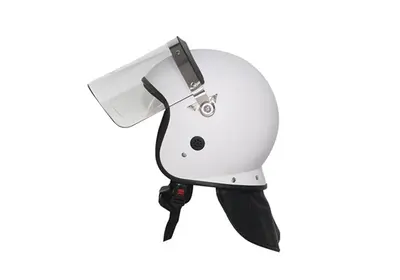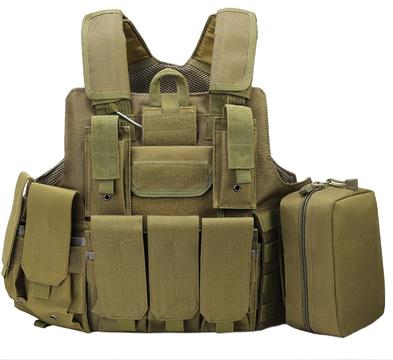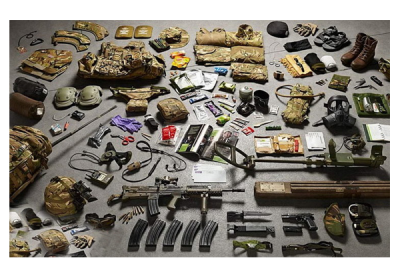
Security personnel must ensure their own safety before they can hope to protect anyone else. Due to the dangers inherent in their profession, body armor and other forms of protective clothing are important equipment for safety workers. When purchasing ballistic suit, you should consider which weapons you need to protect yourself from and whether you want your armor to be visible.
You may find that you need to protect yourself from bullets, knives, needles or other deadly weapons, so you should consider possible threats before buying a vest to ensure the best protection.
Bulletproof vests should be regarded as the basic protection level of security personnel because they can protect your vital organs from bullets in hostile situations. Although bulletproof vests can protect you from deadly gunfire, due to the soft materials used, they cannot resist threats such as blades. To fend off these weapons, choose a vest that can fend off a blade weapon.
Like blade weapons, spiked weapons such as needles or screwdrivers can penetrate bulletproof vests and pass through tiny fibers, making vests useless. To fend off these weapons, choose a vest that can fend off spiked weapons. The stab-and stab-resistant vest is still bulletproof and will use the same fabric to help mitigate the impact of the attack. However, they also include a layer of chain armor and/or plastic laminate to provide a strong surface to resist spikes and blades.
After considering the weapon you need to protect, you should consider the level of protection you need. Bulletproof protection is tested and graded by the National Institute of Justice (NIJ). The tests conducted by NIJ are considered to be the best in the world, and their standards are grouped and called NIJ level. Each level provides an accurate overview of what threats ballistic suit can protect you from.
Each level takes into account the size and strength of the munitions used in the test. For example, Class IIa vests can block 9mm and 0.357 rounds, while Class IV bulletproof vests (the highest level available) can block 7.62x 51mm NATO bullets, even in armor-piercing variants.
Each level also contains all the ammunition listed at the lower level, so the level IV vest can resist the same threat as the level II a. However, this does not mean that security personnel should choose the highest level available, but rather the level that is appropriate for the threat they may face. Just as Class II vests are not suitable when large-caliber weapons are involved, Class IV vests may be insufficient due to their weight.
 Can We Wear an Expired Ballistic Suit? What Are the Risks?March 29, 2022There are two types of ballistic suits: hard armor and soft armor. Each type has its strengths and weaknesses, so you must understand what will best protect you based on your intended activity and env...view
Can We Wear an Expired Ballistic Suit? What Are the Risks?March 29, 2022There are two types of ballistic suits: hard armor and soft armor. Each type has its strengths and weaknesses, so you must understand what will best protect you based on your intended activity and env...view Precautions for Wearing Bulletproof VestsMay 12, 2022Bulletproof vests can ensure the safety of wearers even in vehicle accidents. Every year, many international police are rescued by bulletproof vests. Many survived the impact from the steering column ...view
Precautions for Wearing Bulletproof VestsMay 12, 2022Bulletproof vests can ensure the safety of wearers even in vehicle accidents. Every year, many international police are rescued by bulletproof vests. Many survived the impact from the steering column ...view Why Are Body Armors All Vest Styles? Why Not Protect The Limbs?August 9, 2021Nowadays, science and technology are advancing rapidly, but in terms of the performance of the body armor, it is not able to withstand all damage.view
Why Are Body Armors All Vest Styles? Why Not Protect The Limbs?August 9, 2021Nowadays, science and technology are advancing rapidly, but in terms of the performance of the body armor, it is not able to withstand all damage.view Understanding Anti-riot Shields and Their UseJanuary 18, 20231. Understand the anti-riot shieldAnti-riot shields are light protective devices typically deployed by police and some military groups, but are also used by protesters. Riot control shields are usuall...view
Understanding Anti-riot Shields and Their UseJanuary 18, 20231. Understand the anti-riot shieldAnti-riot shields are light protective devices typically deployed by police and some military groups, but are also used by protesters. Riot control shields are usuall...view Protection Provided by Riot Control ShieldsDecember 15, 20221. Understanding riot control shieldsRiot control shields are shields such as polycarbonate (reinforced plastic) or metal that are used for protection from knives, thrown objects, kicks, punches, etc....view
Protection Provided by Riot Control ShieldsDecember 15, 20221. Understanding riot control shieldsRiot control shields are shields such as polycarbonate (reinforced plastic) or metal that are used for protection from knives, thrown objects, kicks, punches, etc....view How Does the Kevlar Bulletproof Vest Provide Protection?April 10, 2023The prototype of bulletproof vests appeared very early, at that time called armor, to resist swords and protect soldiers. With the development of military weapons, firearms appeared, and bulletproof v...view
How Does the Kevlar Bulletproof Vest Provide Protection?April 10, 2023The prototype of bulletproof vests appeared very early, at that time called armor, to resist swords and protect soldiers. With the development of military weapons, firearms appeared, and bulletproof v...view